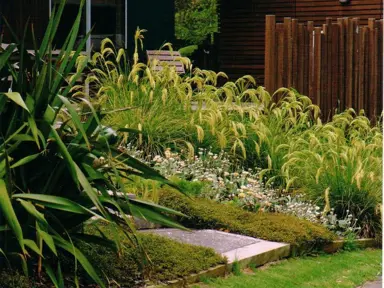
The Plant Company grows, sells, and ships Scutellaria plants throughout NZ. We pride ourselves on producing high quality plants and seeing the joy from our customers when they receive them. We do hope you enjoy them and support this NZ business that is passionate about Scutellaria plants.
Scutellaria indica Parvifolia, commonly known as the Skullcap Herb Plant or Skullcaps plant, is grown for its foliage and flowers. This versatile and...
Scutellaria Snowflakes, commonly known as Scutellaria Skullcap or the Skullcaps plant, is grown for its foliage and flowers. This versatile and...
Growing perennial plants delivers a vast range of benefits:
We have a wide range of Skullcaps-plants of all sizes that are ready for their new home. We are here to help you find the right plant for your space. Choose from a wide variety of locally grown plants that have been propagated and bred to thrive in NZ’s climate. We stock only the highest quality plants, sourcing them from NZ’s leading nurseries. Each plant is packed and transported with extreme care, ensuring it arrives to you in the same condition it was in when it left the nursery. If you are wanting to buy Scutellaria, shop with confidence from the best in the industry.
Scutellaria is a genus of flowering plants in the mint family, Lamiaceae. There are about 300 species of Scutellaria, found mainly in temperate regions of the Northern Hemisphere. Some species are used in traditional medicine for a variety of purposes.
Scutellaria baicalensis, also known as Chinese skullcap, is the most well-studied species of Scutellaria. It is used in traditional Chinese medicine to treat a variety of conditions, including:
Scutellaria laterifolia, also known as American skullcap, is another species of Scutellaria that is used in traditional medicine. It is also used to treat anxiety and insomnia. It is important to note that Scutellaria is not a substitute for conventional medical treatment.
The genus Scutellaria encompasses a diverse range of flowering plants, each with its own unique characteristics and applications. Depending on the specific species, Scutellaria plants may bear various common names, reflecting their distinctive traits or traditional uses. Here's a glimpse into the alternative names for some notable Scutellaria species:
Scutellaria baicalensis:
Scutellaria laterifolia:
In addition to these common names, Scutellaria species may also be referred to by their Latinized names, such as Scutellaria baicalensis or Scutellaria laterifolia. These scientific names provide a precise identification of the plant species, ensuring accurate communication within the scientific community.
Scutellaria, a genus of flowering plants in the mint family, encompasses a diverse range of species with varying distributions across the globe. Here's a breakdown of the geographical distribution of some notable Scutellaria species:
Scutellaria baicalensis (Chinese Skullcap):
Scutellaria laterifolia (American Skullcap):
Scutellaria incana (Downy Skullcap):
Scutellaria galericulata (Common Skullcap):
Scutellaria arenicola (Scrub Skullcap):
Please note that these are just a few examples, and the distribution of Scutellaria species can vary within each region.
Skullcap is an herb that has been used in traditional medicine for centuries. It is generally considered safe when used as directed, but there are some potential side effects and interactions to be aware of.
Possible side effects of skullcap include:
Skullcap may interact with certain medications, including:
Skullcap is not recommended for pregnant or breastfeeding women.
It is important to talk to your doctor before using skullcap, especially if you are taking any medications or have any health conditions.
Scutellaria is the same as skullcap. Scutellaria is the genus to which skullcap belongs. There are many species of Scutellaria, but the most common species used in medicine are Scutellaria baicalensis (Chinese skullcap) and Scutellaria laterifolia (American skullcap).
Growing Scutellaria, also known as skullcap, is a relatively straightforward process that can be accomplished in both indoor and outdoor settings. Here's a step-by-step guide to cultivating Scutellaria successfully:
Soil Preparation and Planting:
Watering and Care:
Maintenance and Propagation:
Harvesting and Drying:
Remember, growing Scutellaria is a rewarding experience that allows you to cultivate a beautiful and beneficial plant for your garden or home. With proper care and maintenance, Scutellaria can thrive in your environment and provide you with a natural source of herbal remedies.
Whether you need assistance finding the plant you’re looking for or you simply want to know more about who we are and what we do, we invite you to get in touch with us today. A member of The Plant Company team will get back in touch as soon as possible.


